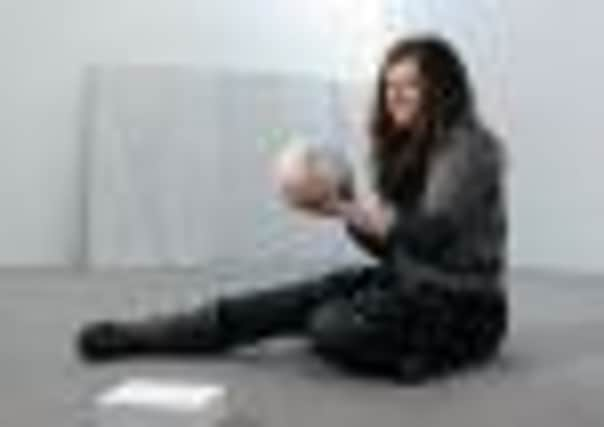Gallery puts its visitors in touch with exhibition


In fact, visitors to the first major solo exhibition of sculptor Michael Dean’s work are being positively encouraged to pat, stroke and tap the various pieces which now stand in the gallery.
“I’m sure people will be nervous about touching the sculpture,” says Lisa Le Feuvre, the Leeds’ institute’s head of sculpture studies.
Advertisement
Hide AdAdvertisement
Hide Ad“Normally exhibitions are absolutely hands-off events, which is what makes this so exciting. For the last decade Michael has been really interested in how people view the world and art and this work shows that touch can be just as important as sight.
“The door handles to the galleries have been replaced with sculptures, which is a way of introducing visitors to the idea of touching Michael’s works even before they have stepped inside the main gallery spaces.”
By way of proving this is not an art exhibition as most people know it, the venue’s information assistants, who normally stand to attention in the various galleries, will also be sat on the floor recently covered with thick wall-to-wall carpet described by the gallery as the “colour of generic 1970s library interiors.”
“I can’t tell you how much we agonised about the carpet,” says Le Feuvre. “Everyone knows the feeling of going to a friend’s house when they’ve had new carpets fitted. There’s a really distinct smell and they want you to kick your shoes off and experience the feel of it. That’s the same effect we wanted. It’s real wool, which is significantly more expensive than man-made fibres, but it has that feeling of luxury.
Advertisement
Hide AdAdvertisement
Hide Ad“Our information assistants normally spend their days on their feet, so they are particularly excited about the next few months. We’ve told them to sit down, lie down, do whatever they feel comfortable with, but yes, I’m sure it will take a little getting used to.”
Entitled Government, the exhibition features three large cast concrete sculptures made on site. One piece, Home (working title), obstructs the entrance space between two of the galleries leaving just a small gap for visitors to squeeze through, while Health (working title) is a replica of the gallery’s longest and highest wall.
While Dean has produced a scaled down version of the wall, at 6m long it is still too large to be moved out of the space and when the exhibition closes in June it will be broken up and destroyed.
“It’s the first time work of this scale has been made on site,” says Le Feuvre.
Advertisement
Hide AdAdvertisement
Hide Ad“Michael wanted to produce work which had a direct relationship with the space in which it was going to be exhibited.
“The place has looked like a building site for the past few weeks and at the end we will have no option but to bring the jackhammers in to break down the bigger pieces. We’ve not entirely decided what to do with the rubble which is left. Michael has said he will take a piece back to his studio so the sculpture will live on just in a different form. That’s one of the reason why all the pieces are working titles, they are not fixed, not set and they will have a life of their own.”
Arranged among the pieces will be paperback books containing text relating to the work, which visitors will be invited to tear pages out of to keep as a souvenir.
“The title of the exhibition refers to how human behaviour and the world we live in is controlled by systems which, while by their very nature are impersonal, are internalised and accepted by each and every one of us.
Advertisement
Hide AdAdvertisement
Hide Ad“Part of the aim of Michael’s work is to challenge that idea and make us look at things in a different way. Over the course of the exhibition he has invited different artists to make use of the space over four evenings, whether that be using his sculpture as a blank projection screen or using the work as a foundation for new sound sculpture.”
Running alongside Dean’s work is a an exhibition of drawings by fellow sculptor Phyllida Barlow. Bad Copies features a selection of work taken from the artist’s own archive and from the sculpture collections of Leeds Museums and Galleries which shows how some of her large scale installations came to be.
“Like Michael, Phyllida takes her inspiration from her environment. She describes her work as ‘bad copies’ because it is always filtered through her own memory and point of view,” says Le Feuvre.
“Set against Michael’s large, almost sparse sculptures, her drawings are a riot of colour and together the work of these two artists combines to stand as a real showcase for contemporary British sculpture.”